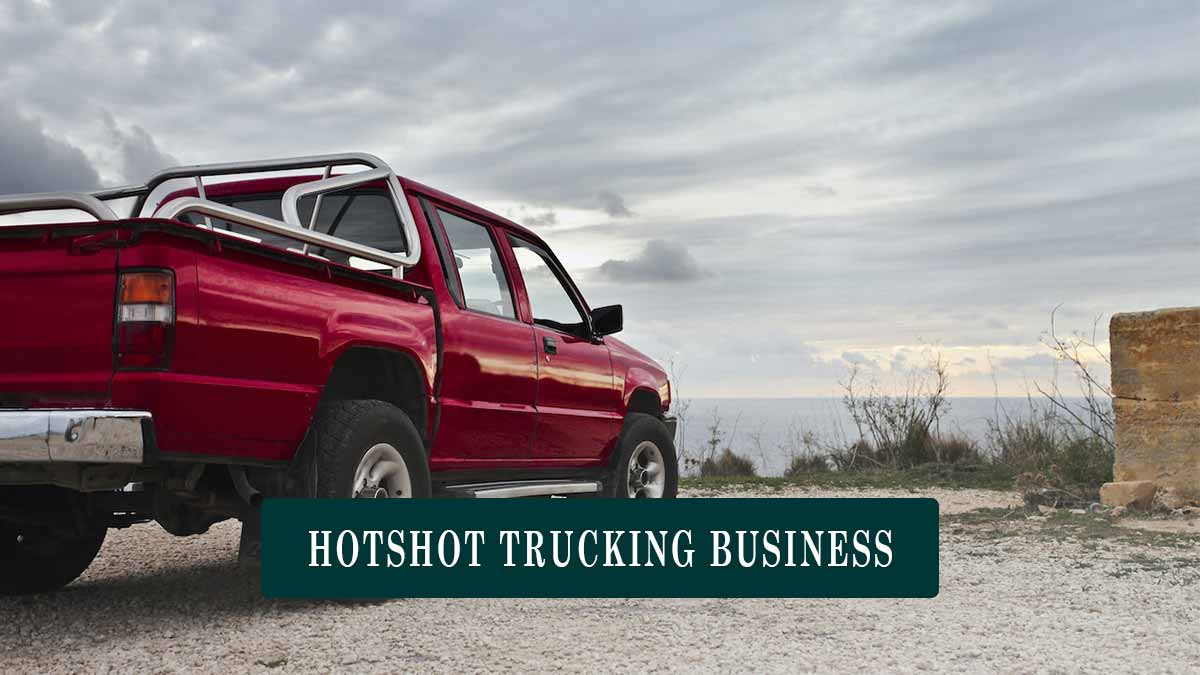Starting a hotshot business can be a lucrative venture if you’re looking for opportunities in the transportation and logistics industry. Hot shot trucking involves delivering time-sensitive and smaller loads to meet urgent demands.
In this comprehensive guide, we’ll walk you through the steps to successfully launch and operate your own hot shot business. But before that, you need to understand all about the HotShot Trucking business.
What is a hotshot business?
A hot shot business specializes in transporting time-sensitive and smaller loads, often using smaller trucks and trailers. These loads are typically urgent and may include items like machinery parts, construction equipment, or perishable goods. Hot shot trucking offers shippers a faster and more flexible alternative to traditional freight carriers.
Why start a hotshot business?
Starting a hot shot business can be appealing for several reasons:
Lower startup costs: Compared to larger freight companies, hotshot businesses require less initial investment.
Quick turnaround: Hot shot deliveries are often time-sensitive, allowing for faster turnaround times and potentially higher rates.
Diverse clientele: A hotshot business can serve a wide range of industries, from construction to oil and gas, providing opportunities for growth.
Flexibility: As a business owner, you have control over your schedule, routes, and clientele.
9 Steps to Start Your Own HotShot Business
You need to follow these simple 9 most important steps to start your hotshot business and make it a profitable business.
Market Research and Planning
Before launching your hot shot business, it’s essential to conduct thorough market research and strategic planning.
Identifying your niche
Determine your specific niche within the hotshot industry. Consider specializing in a particular type of cargo or focusing on a specific geographic region.
Analyzing competitors
Research existing hotshot businesses to understand their services, pricing strategies, and target clientele. Identify opportunities to differentiate your business and offer added value.
Creating a business plan
Develop a comprehensive business plan that outlines your goals, budget, marketing strategies, and growth projections. A well-structured plan will serve as a roadmap for your business’s success.
Legal and Regulatory Requirements
Ensuring legal compliance is critical for the operation of your hotshot business.
Business structure and registration
Choose an appropriate business structure, such as a sole proprietorship, LLC, or corporation, and register your business with the necessary authorities.
Licensing and permits
Obtain the required licenses and permits to operate as a hotshot carrier. This often includes a commercial driver’s license (CDL) and motor carrier authority (MC number).
Insurance requirements
Invest in the necessary insurance coverage, including liability insurance, cargo insurance, and commercial auto insurance, to protect your business and clients’ cargo.
Acquiring the Right Equipment
Selecting the right equipment is fundamental to the success and safety of your hot shot business.
Selecting the right truck and trailer
Choose a truck and trailer that can accommodate your specific cargo needs. Consider factors such as load capacity, trailer type (flatbed, gooseneck, etc.), and fuel efficiency.
Equipment maintenance and safety
Implement a regular maintenance schedule to ensure your truck and trailer are in optimal condition. Safety checks before each trip are essential to prevent accidents.
Compliance with weight limits
Ensure that your equipment complies with weight limits and axle regulations set by the Department of Transportation (DOT) to avoid fines and penalties.
Building a Clientele
Building a solid clientele base is crucial for the success of your hotshot business.
Networking and marketing
Network within your target industries and use online and offline marketing strategies to promote your services. A professional website and a strong online presence can attract potential clients.
Building relationships with shippers
Establish strong relationships with shippers and freight brokers who require hotshot services. Effective communication and reliability can lead to repeat business and referrals.
Contract negotiations
Negotiate contracts and pricing terms with your clients. Clearly define expectations and responsibilities to prevent disputes down the road.
Pricing Strategies
Determining the right pricing strategies is essential for profitability in the hot-shot business.
Determining competitive rates
Research market rates for hot shot services in your region and set competitive yet profitable prices. Consider factors like distance, urgency, and cargo type when quoting rates.
Factoring in expenses
Calculate your operational expenses, including fuel, maintenance, insurance, and permits, and ensure that your pricing covers these costs while leaving room for profit.
Handling unexpected costs
Plan for unexpected costs such as repairs, fines, or delays, which can impact your profitability. Maintaining a financial buffer is advisable.
Operational Management
Efficient operational management is crucial for delivering on time and ensuring client satisfaction.
Route planning and optimization
Plan efficient routes to minimize downtime and fuel costs. Utilize GPS and routing software to optimize your deliveries.
Dispatch and communication
Establish effective communication channels with drivers to provide real-time updates and support. Efficient dispatching is essential for meeting tight delivery deadlines.
Maintaining logs and records
Maintain accurate records of deliveries, expenses, and maintenance activities. Compliance with DOT regulations often requires detailed record-keeping.
Safety and Compliance
Safety is a top priority in the hotshot business, and compliance with regulations is crucial.
Ensuring driver and load safety
Implement stringent safety protocols for loading, securing, and transporting cargo. Ensure that your drivers are well-trained and adhere to safety standards.
Compliance with DOT regulations
Stay up-to-date with DOT regulations, including hours-of-service rules, vehicle inspections, and driver qualifications. Failure to comply can result in fines and penalties.
Safety training and certifications
Provide ongoing safety training for your drivers and ensure they maintain the necessary certifications, such as a valid CDL and hazardous materials endorsement if required.
Scaling Your HotShot Business
Once your hotshot business is established, consider opportunities for growth and expansion.
Expanding your fleet
Gradually add more trucks and drivers to your fleet as demand increases. Expanding your capacity allows you to take on larger contracts and serve more clients.
Hiring additional drivers
Hire experienced drivers who meet all necessary qualifications and can maintain your company’s high standards of service.
Diversifying services
Explore opportunities to diversify your services by offering specialized transport options, such as oversized or hazardous cargo shipments.
Customer Satisfaction and Retention
Maintaining a high level of customer satisfaction is key to the long-term success of your hot shot business.
Providing excellent customer service
Offer exceptional customer service by responding promptly to inquiries, providing accurate delivery updates, and addressing any issues or concerns.
Handling disputes and challenges
Resolve disputes or challenges professionally and promptly to maintain positive relationships with clients. Effective problem-solving can prevent the loss of valuable customers.
Building long-term relationships
Focus on building long-term relationships with clients through reliability, consistency, and exceeding expectations. Loyal clients are more likely to refer your services to others.
Read More: How to Start a CPR Business – A Comprehensive Guide
Conclusion
Starting a hotshot business requires careful planning, compliance with regulations, and a commitment to exceptional service. With the right approach and dedication, you can build a successful hotshot business that meets the urgent transportation needs of clients across various industries.
[Frequently Asked Questions] FAQs
Here are some commonly asked questions about starting a hot shot business:
What types of cargo are commonly transported by hotshot businesses?
Hotshot businesses often transport time-sensitive cargo, including machinery parts, construction equipment, oilfield supplies, and perishable goods.
Do I need a CDL to operate a hotshot business?
Yes, in most cases, you and your drivers will need a Commercial Driver’s License (CDL) to operate a hot shot business, especially for vehicles exceeding a certain weight limit.
How can I find clients and contracts for my hotshot business?
Networking within industries that require hotshot services, using load boards and freight brokers, and building relationships with shippers are effective ways to find clients and contracts.
What are the key factors in setting competitive rates for hotshot services?
Factors such as distance, urgency, cargo type, and operational costs should be considered when setting competitive rates for hotshot services.
How can I ensure the safety of my drivers and cargo in the hot shot business?
Implement stringent safety protocols, provide ongoing training, and comply with DOT regulations. Secure cargo properly and maintain vehicles to ensure safety during transport.




